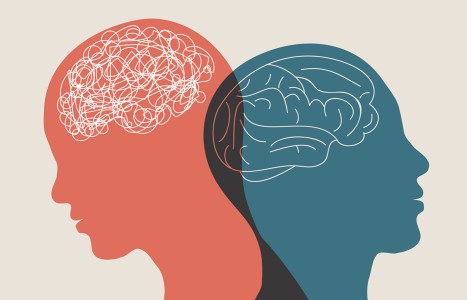Consequences for HIPAA violations can often be quite harsh. If someone has breached the HIPAA privacy regulations – even without any malicious intent, civil penalties are applicable: $100 per violation for unawareness, a minimum of $1,000 for reasonable cause, a minimum of $10,000 if willful neglect is present and then rectified, and finally, a minimum of $50,000 for individuals who act with willful neglect and ignore the issue.
| Digital ExclusiveThe ABCs of Traditional Chinese Medicine and Acupuncture
Traditional Chinese medicine is one of the oldest continuous systems of medicine in history, with recorded instances dating as far back as two thousand years before the birth of Christ. This is in sharp contrast to the American or Western forms of health care, which have been in existence for a much shorter time span (the American Medical Association, the largest health care member association in the United States, was formed in 1847, some 3,800 years after the first mention of traditional Chinese medicine).
Chinese medicine is quite complex and can be difficult for some people to comprehend. This is because TCM is based, at least in part, on the Daoist belief that we live in a universe in which everything is interconnected. What happens to one part of the body affects every other part of the body. The mind and body are not viewed separately, but as part of an energetic system. Similarly, organs and organ systems are viewed as interconnected structures that work together to keep the body functioning.
Many of the concepts emphasized in traditional Chinese medicine have no true counterpart in Western medicine. One of these concepts is qi (pronounced "chi"), which is considered a vital force or energy responsible for controlling the workings of the human mind and body. Qi flows through the body via channels, or pathways, which are called meridians. There are a total of 20 meridians: 12 primary meridians, which correspond to specific organs, organ systems or functions, and eight secondary meridians. Imbalances in the flow of qi cause illness; correction of this flow restores the body to balance. Other concepts (such as the Yin/Yang and Five Element Theories) are equally important in order to have a true grasp of traditional Chinese medicine, and will be discussed at length elsewhere on this site.
Many people often equate the practice of acupuncture with the practice of traditional Chinese medicine. This is not entirely true. While acupuncture is the most often practiced component of traditional Chinese medicine, it is simply that – a component, an important piece of a much larger puzzle. Traditional Chinese medicine encompasses several methods designed to help patients achieve and maintain health. Along with acupuncture, TCM incorporates adjunctive techniques such as acupressure and moxibustion; manipulative and massage techniques such as tuina and gua sha ; herbal medicine; diet and lifestyle changes; meditation; and exercise (often in the form of qigong or tai chi ).
Traditional Chinese medicine should not also be confused with "Oriental medicine." Whereas traditional Chinese medicine is considered a standardized version of the type of Chinese medicine practice before the Chinese Revolution, Oriental medicine is a catch-all phrase for the styles of acupuncture, herbal medicine, massage and exercise that have been developed and practice not only in Asia, but world-wide.
Although the principles of traditional Chinese medicine may be difficult for some to comprehend, there is little doubt of TCM's effectiveness. Several studies have reported on traditional Chinese medicine's success in treating a wide range of conditions, from nausea and vomiting to skin disorders, tennis elbow and back pain. Many Western-trained physicians have begun to see the benefits traditional Chinese medicine has to offer patients and now include acupuncture — at least on a limited basis -- as part of their practice. More Americans are also using acupuncture, herbal remedies and other components of traditional Chinese medicine than ever before. The reasons for this vary, but the increasing interest in, and use of, TCM is due in large part to its effectiveness, affordability and lack of adverse side-effects compared to Western medicine.
Listed below are some of the most well-known concepts in traditional Chinese medicine, along with information on TCM and acupuncture schools, titles and organizations. Clicking on a term will direct you to a new page with information on that particular subject.
More terms will be added in the coming months to present a complete view of all that traditional Chinese medicine has to offer. If there is a term or concept that you think should be included here, please contact us at
Common Traditional Chinese Medicine Terms and Theories
Acupressure
Acupuncture
Asian Bodywork Therapy
Cupping
Electroacupuncture
Five Element Theory
Moxibustion
NADA Protocol
Pulse Diagnosis
Qi, Jing and Shen
Qigong
Reiki
Shiatsu
Tai Chi
Tuina
Yin and Yang Theory
Acupuncture Organizations
Acupuncture Regulatory Agencies
Acupuncture/TCM Schools
Acupuncture Titles and Abbreviations
Condition Center
Since its introduction to the West, acupuncture has been used to treat or cure a wide range of ailments. In the late 1970s, the World Health Organization recognized the ability of acupuncture and Oriental medicine to treat nearly four dozen common ailments, including neuromusculoskeletal conditions (such as arthritis, neuralgia, insomnia, dizziness, and neck/shoulder pain); emotional and psychological disorders (such as depression and anxiety); circulatory disorders (such as hypertension, angina pectoris, arteriosclerosis and anemia); addictions to alcohol , nicotine and other drugs; respiratory disorders (such as emphysema, sinusitis, allergies and bronchitis); and gastrointestinal conditions (such as food allergies, ulcers, chronic diarrhea, constipation, indigestion, intestinal weakness, anorexia and gastritis).
In 1997, a consensus statement released by the National Institutes of Health found that acupuncture could be useful by itself or in combination with other therapies to treat addiction, headaches, menstrual cramps, tennis elbow, fibromyalgia, myofascial pain, osteoarthritis, lower back pain, carpal tunnel syndrome and asthma. Other studies have demonstrated that acupuncture may help in the rehabilitation of stroke patients and can relieve nausea in patients recovering from surgery.
For a more detailed description of conditions that can be treated by acupuncture, click on the specific links below.


